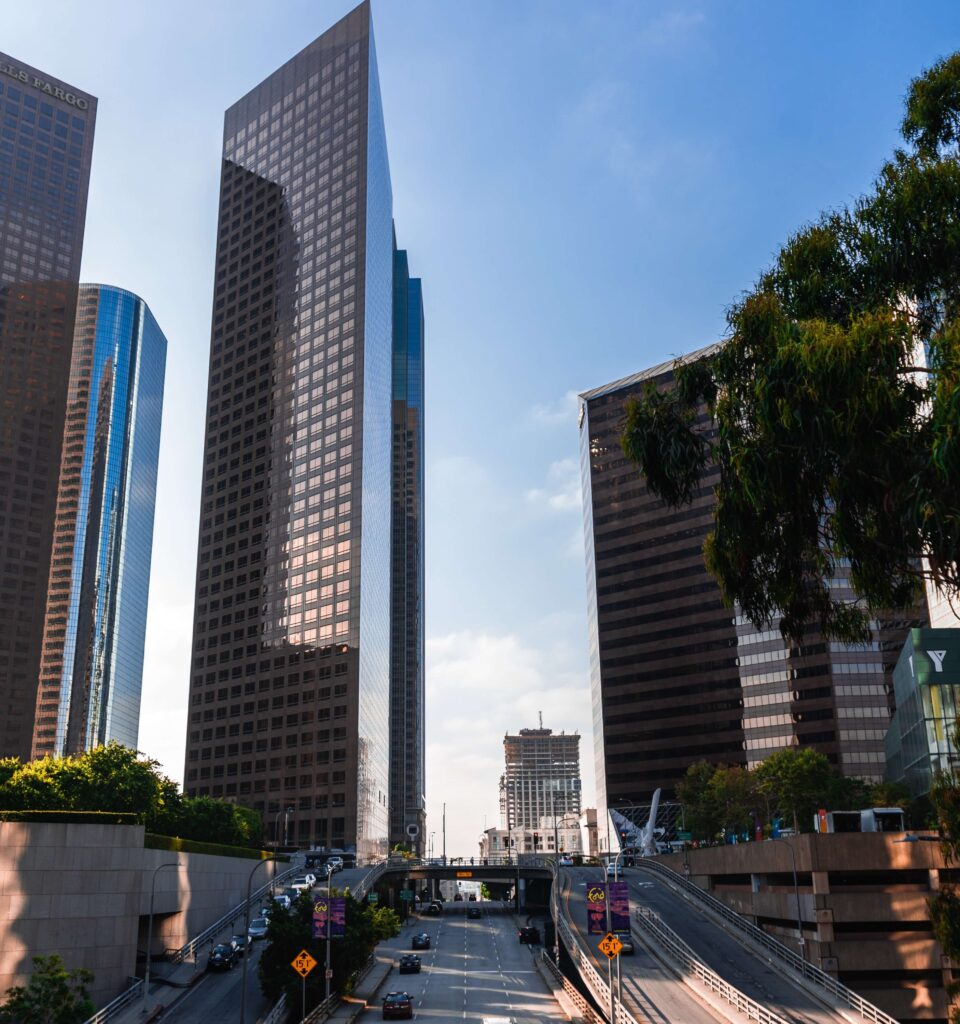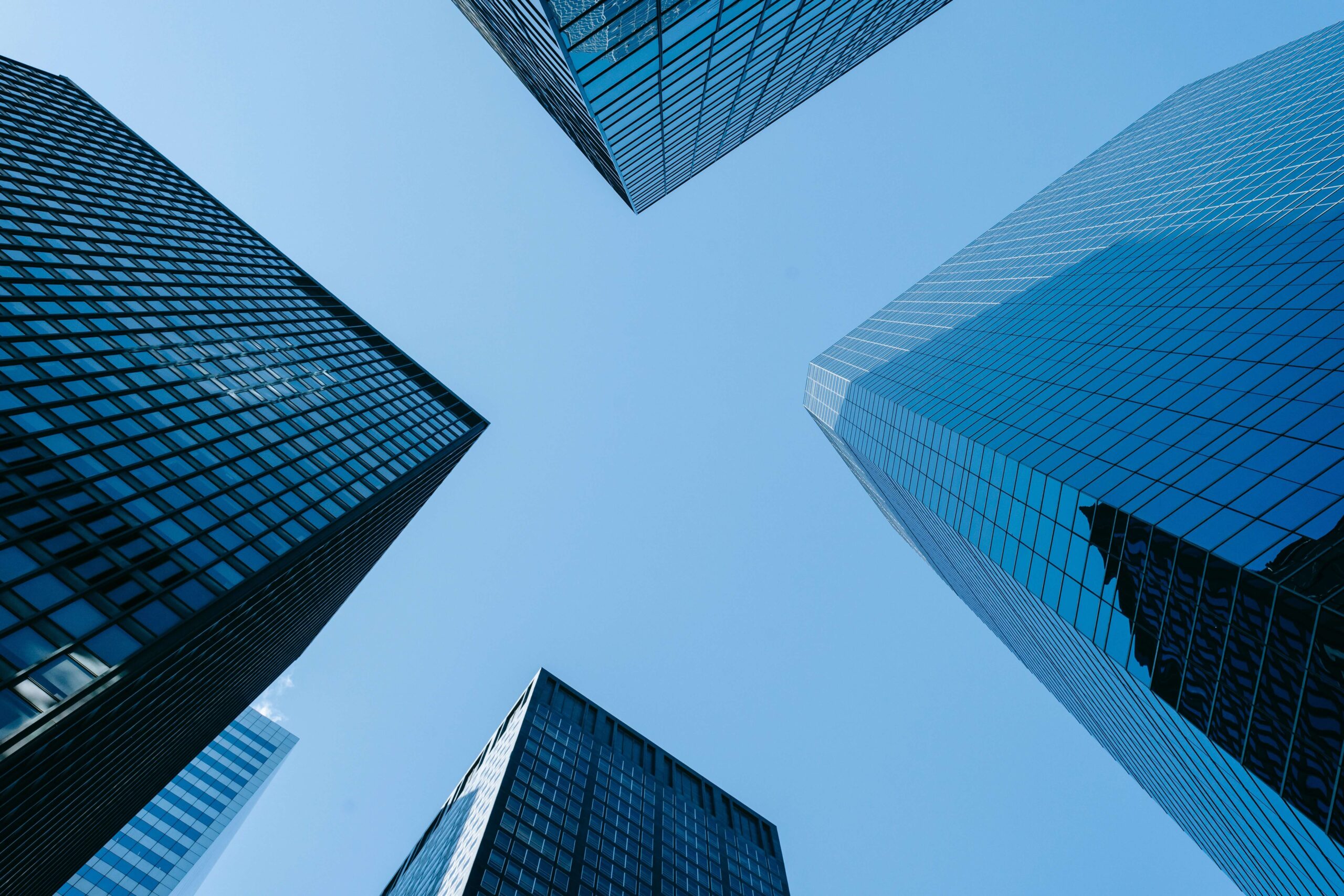Have you experienced intense summer heat, increased air and water pollution, and irregular rainfall? These are all consequences of the Industrial Revolution and the overuse of natural resources.
According to NASA’s GISS, global temperatures have risen by 1.11°C since 1880, primarily due to human activities such as burning fossil fuels, trees, and solid waste, which release CO2 into the atmosphere. This, in turn, leads to the greenhouse effect, trapping heat and causing global warming. This is why sustainable development is important.
As the world grows and resources become increasingly scarce, it is important to balance development with environmental protection. Sustainable development is the key to achieving this balance. Sustainable development means meeting the current generation’s needs without compromising the ability of future generations to meet their own.
We can conserve natural resources, promote social justice, and ensure economic sustainability by promoting sustainable development. This article will highlight the importance of sustainable development and how individuals can contribute to it.
Understanding sustainable development
Sustainable development is not solely about economic growth but also encompasses the promotion of good health and well-being, gender equality, peace and justice, sustainable communities, reduced inequalities, environmental protection, and fair utilization of natural resources. By adopting this sustainable approach, we can ensure a brighter future not only for ourselves but also for generations to come.

The Importance of Sustainable Development
The importance of sustainable development is to address the challenges we are facing today, such as climate change, poverty, injustice, and resource depletion. By adopting sustainable development, we can have sustainable communities, decent economic growth, resilient infrastructure, and a livable environment.
Sustainable Development Goals and Targets
To achieve sustainable development, the United Nations has established sustainable developmental goals (SDGs). These 17 developmental goals provide a roadmap for governments and individuals to work together and achieve a more sustainable and equitable world by 2030. By reducing poverty and hunger and ensuring everyone has access to quality education, clean water and sanitation, affordable energy, reduced inequalities, good health and well-being, and environmental protection, the SDGs cover a range of issues that are crucial for our well-being.
Importance of Sustainable Development In Environmental Protection
The objective of sustainable development is to protect the environment. We need to take urgent action against climate change.
Increased pollution leads to global warming; however, by conserving natural resources and reducing pollution, we can save our environment.
Environmental sustainability is an important pillar of sustainable development. It focuses on preserving and protecting our environment. The idea is to save natural resources and protect the ecosystem.
The three main focuses of environmental sustainability
- Climate action: This goal addresses immediate action on climate change.
According to the SDG’s 2023 report, the world temperature will increase by 1.5° by 2035. The rise in sea level has doubled since last decade.
- Life below water: This goal addresses the sustainable use of ocean and marine life.
According to the SDG’s 2023 report, the ocean is choked with plastic pollution, a rise in sea water temperature, overfishing, ocean acidification, and coastal eutrophication affecting the ecosystem.
- Life on land: These objectives focus on sustaining the environment, managing forests sustainably, preserving fertile land, stopping land degradation, and protecting all species of life.
According to SDG’s 2023 report, 100 million hectares of healthy land are degraded every year, and we are facing rapid species extinction.
Environmental sustainability focuses on balancing human activities and the earth’s ecosystems to prevent harm to the environment. It involves some practices and initiatives that protect the environment.
By implementing some policies, we can protect our environment.
Preserving Biodiversity:
Ecosystem Conservation: This involves protecting natural ecosystems, such as forests, wetlands, and oceans, to save biodiversity and the ecosystem.
Wildlife Protection: We are facing the extinction of some species; if this continues to happen, there will be an imbalance in the (food chain) ecosystem. By preserving endangered species and their habitats through national parks, wildlife reserves, and conservation programs, stopping illegal hunting, and taking climate action, we can stop species extinction.
Reducing Carbon Footprint:
Renewable Energy Sources: Depending on fossil fuels and coal for energy production causes carbon emissions. Switch to clean and renewable energy sources like solar, wind, and hydropower to reduce greenhouse gas emissions and combat climate change.
Energy Efficiency: By implementing energy-efficient technologies and practices in industries, buildings, and transportation to lower energy consumption, we can also reduce our carbon footprint by switching off lights, fans, ACs, and TVs when not in use.
Using cycles, walking to the nearest distances, or using public transportation, we can reduce our carbon footprint.
Waste Reduction and Recycling:
Importance of Recycling: By implementing recycling programs, we can reduce waste going to landfills, conserve valuable resources like metals, plastics, and paper, and reduce the use of new raw materials for making new products.
Reducing Single-Use Plastics: Initiatives to reduce the use of single-use plastic products, such as bags and straws, to minimize plastic pollution in oceans and ecosystems
Use steel straws instead of plastic straws.
Take a reusable bag, cutlery, and water bottle while going out.
Refuse, single-use plastic bags, water bottles, straws, cups, plates, etc.
Conservation of Natural Resources:
Sustainable Forestry: Implementing sustainable logging practices to protect forests and ensure a continuous supply of timber and other forest products.
Responsible Water Management: Promoting responsible water usage, rainwater harvesting, water conservation, and the protection of freshwater ecosystems
Ecosystem Restoration:
Rehabilitating Degraded Lands: Efforts to restore areas affected by deforestation, desertification, or pollution, aiming to revitalize ecosystem.
Coral Reef Conservation: Protecting and restoring coral reefs, which are vital marine ecosystems that support biodiversity and coastal communities.


Environmental Education and Advocacy:
Raising awareness: educating the public about environmental issues and encouraging responsible behaviors.
Educating in schools, offices, and the public sector is necessary to make people understand sustainable development and their contributions to it.
Supporting change: People can engage in environmental advocacy and support policies and initiatives that promote sustainability and protect the environment.
Environmental sustainability is essential for limiting the impacts of climate change, ensuring clean air and water, preserving biodiversity, and maintaining the overall health of our planet. It requires collective efforts from governments, businesses, communities, and individuals to make responsible choices and take actions that promote a sustainable and healthy environment for current and future generations.
Importance of Sustainable Development In Economic Growth
Economic sustainability is an important pillar of sustainable development. Economic sustainability focuses on long-term economic growth while considering social and environmental well-being.
Sustainable economic practices include promoting corporate social responsibility (CSR), the circular economy, ethical supply chain management, responsible consumption and production, sustainable innovations, using renewable energy resources, and green product development.
Corporate social responsibility (CSR) is a company’s contribution to environmental and social well-being.
By adopting sustainable business practices, we can reduce dependence on fossil fuels, create new job opportunities, attract conscious consumers, aim for long-term profitability, and reduce environmental pollution.
Sustainable development is the interconnectedness of economic, social, and environmental factors and involves collaboration among governments, businesses, communities, and individuals to achieve a more sustainable and equitable economic future.

Importance of Sustainable Development In Social Wellbeing
Sustainable development promotes social justice, peace, and inclusive societies by addressing inequality, improving access to quality education and healthcare, and empowering communities.
It also involves sustainable urban planning to ensure safer, livable cities with clean energy, access to public transportation, affordable housing with clean water, and sanitation.
Social sustainability involves initiatives, policies, and practices aimed at creating a just, inclusive, and cohesive society. Promoting social equality, building local economies, protecting cultural diversity, creating social inclusion, empowering vulnerable groups, promoting communities in decision-making processes, promoting social resilience, advancing education, and creating awareness are aspects of socially sustainable development.
Collaboration between governments, communities, businesses, and individuals is essential for creating fair, inclusive, and just societies, allowing everyone to lead a fulfilling and dignified life. Overall, social sustainability is a fundamental aspect of sustainable development that focuses on addressing social challenges, helping community development, and promoting social equity.

Sustainable Development Goals (SDGs)
The sustainable development goal represents the global goal to solve some critical problems by 2030. These goals focus on sustainable development and include economic, social, and environmental aspects. We will discuss each goal in detail.
The 17 SDGs are interconnected and universally adapted goals that were established by the United Nations in 2015 as part of the 2030 agenda for sustainable development. These goals were created to address various challenges and share a blueprint for a sustainable future.
Here’s an explanation of the Sustainable Development Goals:
- No Poverty (Goal 1): The No Poverty goal aims to eliminate poverty and reduce inequalities. We have to end all forms of poverty. (According to Dr. APJ Abdul Kalam, poverty is our enemy.)
- Zero Hunger (Goal 2): This goal aims to end hunger while improving sustainable agriculture, food security, and nutrition.
- Good Health and Well-Being (Goal 3): This goal aims for everyone to lead healthy lives and promote well-being at all ages, including access to healthcare.
- Quality Education (Goal 4): Ensure equitable and inclusive quality education and provide opportunities for everyone to continue learning throughout their lives.
- Gender Equality (Goal 5): This goal aims to reduce gender-based violence and discrimination to achieve gender equality and empower all women and girls.
- Clean Water and Sanitation (Goal 6): Ensure everyone has access to clean water and sanitation that is managed sustainably.
- Affordable and Clean Energy (Goal 7): Ensure that everyone has access to cost-effective, clean, sustainable, and renewable energy resources.
- Decent Work and Economic Growth (Goal 8): This goal aims for sustainable economic growth that promotes employment for everyone.
- Industry, Innovation, and Infrastructure (Goal 9): This goal aims to build resilient infrastructure, encourage a sustainable and equitable industry, and promote innovations for sustainable development.
- Reduced Inequality (Goal 10): Promote social, economic, and political equality by reducing inequality both within and between nations.
- Sustainable Cities and Communities (Goal 11): This goal aims to create cities that are safe, strong, and resilient, including communities that include access to public transportation and roads.
- Responsible Consumption and Production (Goal 12): This goal aims to reduce overproduction, which leads to environmental pollution, and promote sustainable consumption and production patterns.
- Climate Action (Goal 13): Take immediate action to reduce climate change and its effects.
- Life Below Water (Goal 14): Protect the oceans, seas, and marine resources and use them responsibly for development.
- Life on Land (Goal 15): Preserve, restore, and encourage the sustainable use of ecosystems on earth. Additionally, this goal aims to manage forests sustainably, prevent desertification, and stop the loss of biodiversity.
- Peace, Justice, and Strong Institutions (Goal 16): This goal promotes peace and justice for everyone and develops inclusive, effective, and accountable institutions.
- Partnerships for the Goals (Goal 17): Promote the global partnership for sustainable development and strengthen its implementation processes.
All these 17 sustainable development goals are interlinked to solve common problems. Sustainable development needs support from business, government, and individuals.
Benefits of Sustainable Development
Sustainable development can benefit everyone, including individuals, communities, businesses, and governments. Social, economic, and environmental sustainability are pillars of sustainable development.
Environmental Benefits:
Sustainable development practices preserve ecosystems, reduce climate change by reducing greenhouse gas emissions and promoting renewable energy, and promote natural resource conservation by effectively using natural resources and reducing waste, ultimately preserving biodiversity and ecological balance.
Economic Benefits:
Sustainable development promotes long-term economic stability, job creation, and innovation, reducing risks from resource depletion and environmental disasters.
Sustainable businesses create jobs in renewable energy, conservation, and other sectors, contributing to employment growth.
Social Benefits:
Sustainable development focuses on meeting the basic needs of all individuals and ensuring access to education, healthcare, clean water, and sanitation, leading to an improved quality of life. It also focuses on reducing social inequalities and providing equal opportunities to everyone.
Resilience to crises:
Communities and nations that prefer sustainable development are better prepared to withstand and recover from natural disasters and crises.
Global Cooperation:
Sustainable development encourages collaborations to address global challenges, reduces inequality, and promotes social inclusion, all of which contribute to peace and security.
Ethical and moral values:
Sustainable development teaches ethics and values by encouraging individuals to become responsible for saving natural resources and to commit to equality, justice, and peace.
Sustainable development shows commitment to leaving a positive impact on future generations and shows a sense of responsibility toward the planet.
Sustainable development offers many benefits that involve environmental protection, economic stability, social well-being, and global cooperation. By adopting sustainable practices and policies, societies can build a more equitable, resilient, and prosperous future for all while saving the planet.
Challenges and Barriers to Sustainable Development
Sustainable development, which promises a more equitable and environmentally responsible future, faces numerous challenges from economic, political, cultural, and technological sources, and it is necessary to understand and address these obstacles.
Economic and Political Obstacles:
Short-term economic focus, resource-intensive industries, and political resistance can hinder investments in environmentally friendly technologies, and resisting transitions to sustainable alternatives can hinder the implementation of sustainable policies.
Technological and Infrastructural Limitations:
Technological gaps, infrastructure challenges, and dependence on certain technologies can hinder adoption in less developed regions, creating vulnerabilities and limiting adaptability to changing circumstances.
Lack of Financial Resources:
The high upfront costs of sustainable practices and technologies can hinder individuals, communities, or nations with limited financial resources, hindering their development and implementation.
Policy and Regulatory Issues:
Poor implementation of environmental regulations and inconsistent policies across different governments can hinder coordinated sustainability efforts.
Complexity and interconnectedness:
Addressing sustainability issues is a complex process due to interconnected challenges, and it needs international cooperation and coordinated efforts, such as climate change and biodiversity loss.
Lack of Information and Education Gaps:
Lack of awareness and education on sustainability can hinder individual efforts and contributions to sustainable development.
How Individuals Can Contribute to Sustainable Development
Individual actions are important for sustainable development. We can support sustainable development by adopting renewable energy, reducing waste, shopping locally, and supporting sustainable businesses through these simple practices. Additionally, it creates awareness and educates communities about sustainable development.

The Role of Businesses in Sustainable Development
Businesses can adopt sustainable practices to reduce their carbon footprint and environmental damage. Additionally, they can enhance their reputation and attract customers. Furthermore, businesses can provide jobs to local communities, ensure fair labor, and support the local economy.
Here are the key aspects of business and sustainable development:
- Adopting sustainable business practices can contribute to long-term economic growth, create employment, increase productivity, and continue innovations for sustainable development.
- By adopting sustainable resource management, responsible production, and environmental conservation, reducing emissions, conserving energy and water, and adopting eco-friendly technologies and practices, they can minimize their ecological footprint.
- Companies can support ethical labor practices, support sustainable community development, and work to improve individual well-being.
- Businesses can adopt a sustainable supply chain with partners that share values and promote responsible sourcing, reducing the environmental and social impacts of their products and services.
- Sustainable development encourages businesses to innovate and develop eco-friendly technologies and products such as renewable energy, electric vehicles, and sustainable agriculture.
- Governments worldwide are implementing sustainability regulations, ensuring compliance with sustainable businesses, and advocating for stronger environmental and social policies.
- Businesses need to focus on long-term sustainability rather than short-term profits, balancing economic growth with environmental and social considerations to ensure operations are sustainable for future generations.
By adopting sustainable practices and strategies, businesses can contribute to sustainable development, save natural resources, and reduce environmental damage.
The Role of Government and Policy in Sustainable Development
The government plays an important role in implementing rules for sustainable development.
The government can support sustainable development by promoting renewable energy resources and investing in education, infrastructure, and healthcare.
Environmental Regulations:
Governments need to set some policies that protect the environment, such as air and water quality, waste management, and reductions in carbon emissions.
The government can give incentives, such as tax reductions, to individuals and businesses adopting sustainable practices such as renewable energy installations and energy-efficient technologies.
International Agreements:
Paris Agreement: Governments can participate in international agreements like the Paris Agreement, which sets targets for reducing greenhouse gas emissions to combat climate change.
United Nations Sustainable Development Goals (SDGs): Governments commit to achieving the SDGs, integrating these goals into their national policies and strategies.
Resource Management:
Governments are responsible for the sustainable management of natural resources like forests, fisheries, and water sources to prevent overexploitation.
Public Investment:
Infrastructure Development: Governments need to invest in sustainable infrastructure projects, including public transportation, renewable energy, and eco-friendly buildings.
Research and Development: The government can fund research and development initiatives that can promote innovation in sustainable technologies and practices.
Education and Awareness:
Education Programs: Governments can promote sustainability education in schools and universities to raise awareness and understand the responsibility for environmental protection.
Public Awareness Campaigns: Launching public awareness campaigns on sustainability issues, climate change, and conservation efforts helps engage citizens in sustainable practices.
Disaster Preparedness and Response:
Emergency Response: Governments are responsible for disaster prevention, response, and recovery.
Global Cooperation:
Diplomacy and Collaboration: Governments can collaborate internationally to preserve biodiversity and marine life.
Long-Term Planning:
Sustainable Development Strategies: Governments can develop long-term sustainable development strategies and goals that guide policy decisions, budgets, and development plans. Government policies and regulations are important for preserving natural resources and economic growth for sustainable development.
Importance of Sustainable Development In Different Sectors
Sustainable development applies to all areas; we will explain sustainable development in different sectors.
Sustainable Agriculture:
Organic farming promotes sustainable practices by minimizing the use of chemicals and pesticides in production, preserving soil health, ensuring food security, ensuring access to safe, nutritious food, and reducing waste.
Sustainable Transportation:
The focus is on expanding public transportation systems, promoting electric vehicles, and developing green mobility options to reduce traffic congestion and carbon emissions.
Promoting walking and cycling infrastructure to create a more sustainable, healthier, and less congested environment.
Sustainable Construction:
Green Building Standards: Implementing sustainable building standards that focus on energy saving, water conservation, and the use of eco-friendly materials.
Encourage the use of environmentally friendly building materials, such as bamboo, recycled materials, and reused wood.
Energy Sector:
The goal is to promote energy-saving methods to lower energy use in buildings, businesses, and transportation, along with the use of renewable energy sources like solar, wind, and hydroelectric.
Water Management:
Implementing water-saving technologies in agriculture, industry, and households and ensuring wastewater treatment processes to minimize pollution and ensure a safe return to natural systems.
Forestry and Logging:
Sustainable forestry involves reforestation and reduced-impact logging to preserve biodiversity, while certification programs like the Forest Stewardship Council promote responsible forest management.
Marine and Fisheries:
Promoting sustainable fishing practices to preserve ocean ecosystems and reduce overfishing.
Tourism
Eco-tourism promotes eco-friendly tourism, respecting local cultures and environments, while green accommodation encourages sustainable practices in hotels and resorts, such as energy-saving lighting and waste reduction.
Education and Research:
Sustainability education is important among students, colleges, offices, and residents. It helps to create awareness and give knowledge to future generations so they can live sustainably and save our environment.
Conducting research that addresses environmental and social challenges and promotes sustainable solutions.
Sustainable development involves adopting practices that minimize environmental impact.
Call to action
Sustainable development is not just a set of goals; it also needs to be adopted into our lifestyle. By adopting sustainable practices, we can save our environment for ourselves and future generations.
Sustainable goals are not only the responsibility of governments; they also require collective efforts from communities, businesses, and individuals.
We can take some simple steps to have a better future for all by reducing waste, using eco-friendly products, using renewable energy resources, saving energy, reducing plastic waste, practicing responsible consumption and production, and preserving natural resources.
By promoting justice and peace, gender and race equality, and giving equal opportunities to all, we can have peaceful societies.
By adopting sustainable practices, we can be resilient to environmental, social, and economic challenges. From reducing poverty and inequality to preserving our natural resources and ensuring a better future for all.
Let’s embrace sustainable development concepts and collaborate to build a just and sustainable world for present and future generations.
Am Jeenath is an engineer in biotech with a diploma in clinical research. I am the mother of a son. And I love helping people live sustainably. I educate people on sustainable living and share sustainability tips, ideas, brands, and DIYs.


Wow wonderful blog layout How long have you been blogging for you make blogging look easy The overall look of your site is great as well as the content